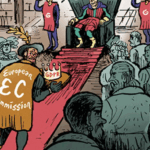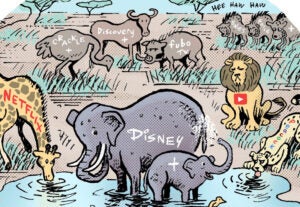Kid-focused brands have to jump through a lot of hoops – which isn’t a bad thing. Kids need protection online.
But contextual intelligence platform Precise TV is hoping to make it easier for these brands to reach their target audiences without compromising on privacy.
On Wednesday, Precise TV formally announced the launch of PACE, a new tool for targeting and measuring audiences under 18.
Precise first teased PACE, which is short for “Precise Audience Content Evaluator,” at the IAB PlayFronts earlier this month.
The tool uses a proprietary machine learning model to predict likely audience demographics for content on YouTube, as well as mobile apps on Google Play and the Apple App Store. Precise routinely trains its model on insights and data gathered from opted-in audience panels of parents with kids, both as a test of accuracy and a way to adapt to new forms of content.
Most importantly, however, the tool doesn’t rely on or collect any personally identifiable information, which Precise TV claims makes it compliant with major child-focused privacy laws in both the US and Europe.
Think of the children
Even before the commercial internet, advertising to kids has always been more difficult than advertising to adults thanks to government regulations that limited the number of commercials and even types of programming children could see (at least until the ’80s).
Still, even as recently as 15 years ago, marketers could at least depend on a small handful of kid-friendly publishers to provide show-level audience information, such as age ranges and gender.
Fragmentation in the media landscape has made it more difficult to get that kind of demographic information. And laws, like the Children’s Online Privacy Protection Act in the US and the General Data Protection Regulation in the EU, place tight restrictions on collecting and using data from children under 13.
AdExchanger Daily
Get our editors’ roundup delivered to your inbox every weekday.
Daily Roundup
It’s also become harder to reach older teenagers. In 2022, Google began blocking certain forms of ad targeting for users under 18. The following year, Instagram implemented similar measures for EU users and, in 2024, launched a new restricted form of teen account that requires parental permission to alter.
The upshot for kid- and teen-focused advertisers is that they’re typically limited to buying based on context – and a lot of ad dollars get wasted along the way, said Luke Garden, business director of UK-based agency Generation Media. An early tester of PACE and client of Precise TV, Generation Media specializes in media buying for brands that target children, families and young people.
“You can tap into ‘Talking Tom’ or ‘Subway Surfers’ or different YouTube channels,” Garden said, “but you don’t know if you’re reaching kids ages 4 to 6 or 6 to 12.”
Kid-tested, mother approved
Unlike Precise TV’s other contextual targeting tools, PACE is trained on new data from a series of opted-in audience panels developed in collaboration with market research firm Giraffe Insights.
One is called the Precise Advertiser Report for Kids, or “PARK,” and includes parents of kids ages 2 to 12. The other is the Precise Advertiser Report for Teens and Youth, called “PARTY,” which includes parents of kids ages 13 to 17.
Both panels are anonymized and rely on aggregated data, which Precise TV uses to train PACE to seek out content that appeals to particular audiences, both before an ad campaign launches and while it’s still in flight, said Sam Brown, Precise TV’s director of product.
For example, if PARK panel data suggests an overwhelmingly positive response to “Peppa Pig,” Precise TV’s engineers can tell the model to look for content that resembles “Peppa Pig” and then categorize it as being interesting to the same audience.
App developers can also use these insights to inform what type of creative to deploy in campaigns, said Brown.
For instance, Precise found that interactive puzzle-based ads to promote mobile gaming apps work better with younger kids, whereas action-oriented ones perform better for older kids, Brown said.
The challenge is in the change
Speaking of insights, Generation Media’s Garden told AdExchanger he’s been especially impressed with PACE’s postcampaign analysis, which moves away from “arbitrary figures” like clickthrough rates and into “tangible, actionable learnings.”
When Generation Media first ran campaigns during PACE’s beta test, it found that roughly 76% of impressions came from the core intended audience, Garden said. As the model has gotten better at making predictions, that number has continued to improve.
That said, getting more reach with a target audience doesn’t automatically translate to more sales overnight, given that most kids don’t have access to their own credit cards. But it certainly contributes to “pester power,” which is when children hound their parents to buy something for them after being exposed to marketing.
Moving beyond contextual advertising to reach kids is a more effective – and also cheaper – way to influence purchases than other reach methods, including linear TV back in the day, said Denis Crushell, chief commercial officer of Precise TV.
And in today’s economy, being able to spend money more wisely is always a good thing – particularly for the toy and gaming industries, which will be heavily impacted by increased tariffs on Chinese goods coming into the US.















